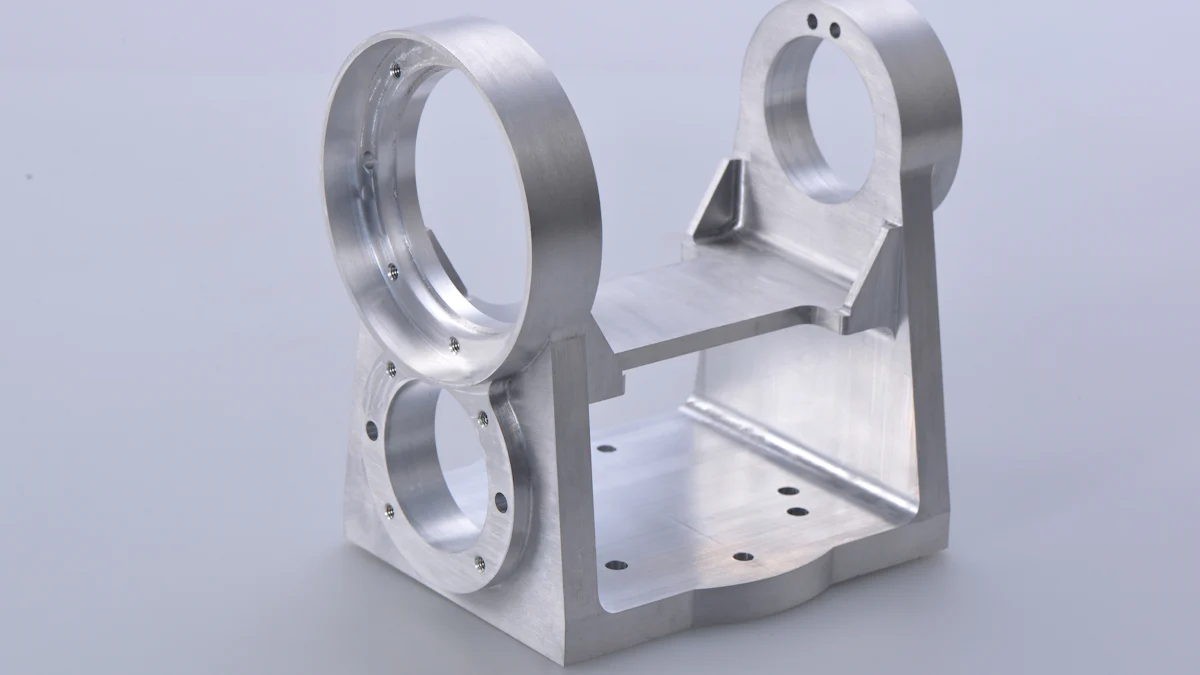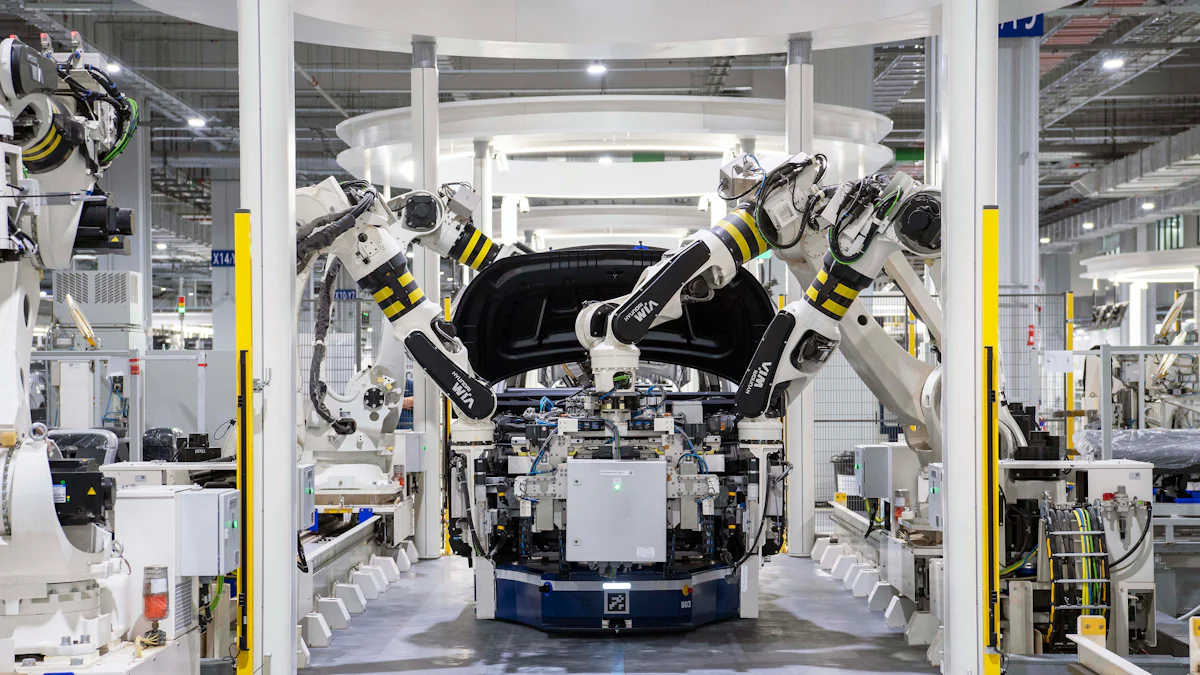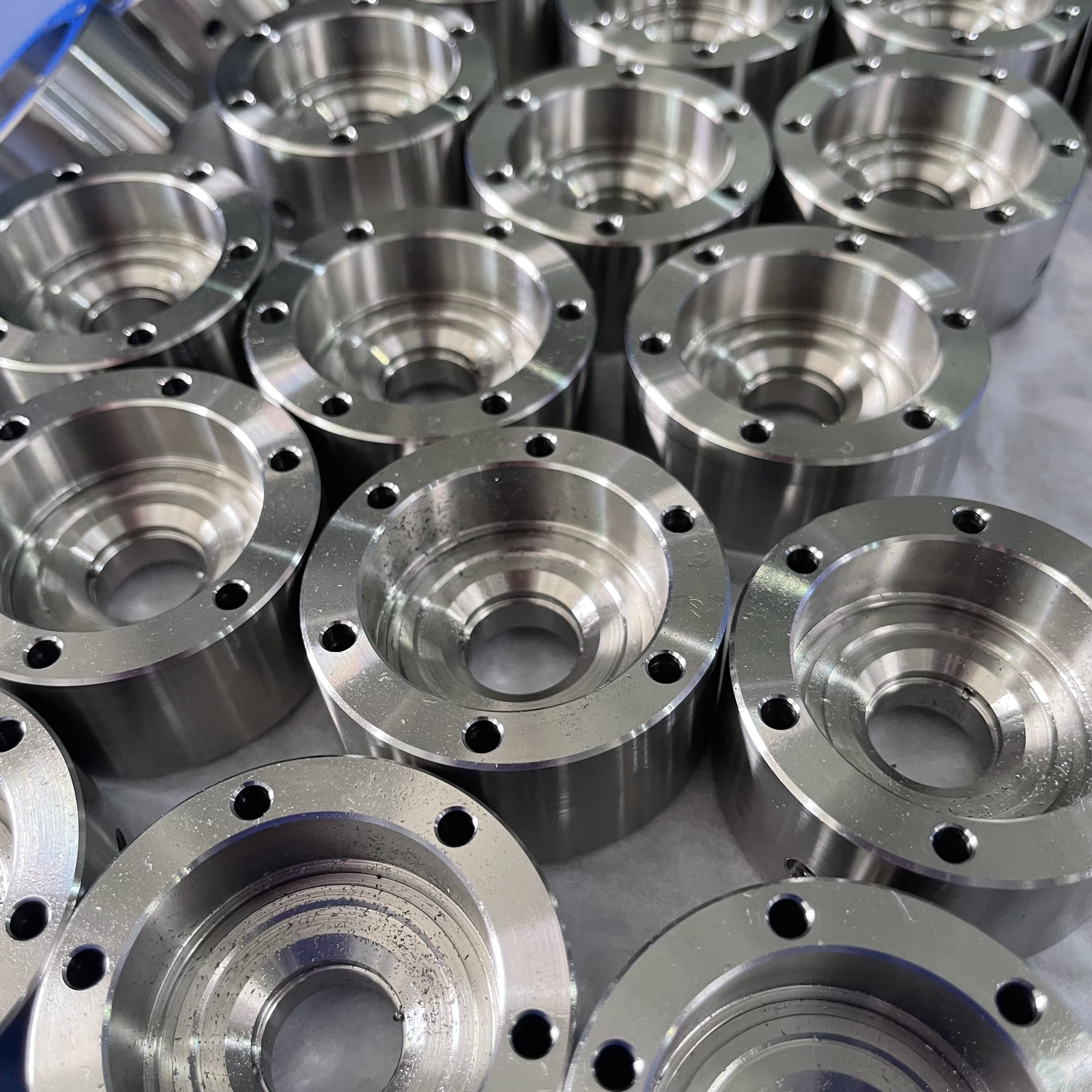CNC Machining vs. Injection Molding

Choosing the right manufacturing process depends on your specific needs. CNC machining, short for computer numerical control machining, uses programmed tools to shape materials like metals, plastics, and ceramics. Plastic injection molding, on the other hand, involves injecting molten plastic into molds to create parts. CNC machining offers tighter tolerances (±0.001”) and flexibility for design changes, while injection molding excels in high-volume production. Understanding these differences ensures you select the most efficient and cost-effective method for your project.
Attribute | CNC Machining | Plastic Injection Molding |
|---|---|---|
Typical tolerances | 0.001” | 0.005” |
Fast per part cycle times | No | Yes |
Fast Lead Times for Tooling | Yes | No |
Easily make design modifications | Yes | No |
Wide range of available materials | Yes | No |
High-volume production (>1000 pcs) | No | Yes |
Large upfront investment | No | Yes |
Key Takeaways
CNC machining works well for small to medium production amounts. It gives precise results and is great for custom designs.
Injection molding is better for making many parts at once. It saves money and time after the mold is ready.
Use CNC machining for projects needing exact details and complex designs. It is often used in aerospace and medical fields.
Injection molding is good for making lots of the same part fast. It is common in car and everyday product industries.
Think about your material needs, budget, and goals to pick the best method.
Understanding CNC Machining

What is CNC Machining?
CNC machining is a manufacturing process that uses computer-controlled machines to create precise parts. It operates through a series of steps that ensure accuracy and efficiency:
Computerized Control: Machines follow instructions from G-code, a programming language that dictates movements and operations.
Precision and Accuracy: CNC machining delivers parts with tight tolerances, reducing errors compared to manual methods.
Automation: Machines run continuously with minimal human intervention, boosting productivity.
Versatility: CNC machines handle various materials and perform tasks like cutting, drilling, and milling.
The process begins with designing a CAD model, which is then converted into G-code. After setting up the machine and workpiece, the machining operations are executed. Once complete, the part undergoes inspection, post-processing, and final assembly if needed.
Applications of CNC Plastic Machining
CNC plastic machining is widely used across industries due to its precision and adaptability. You’ll find it in:
Medical Industry: Producing implants, surgical tools, and electronic enclosures for medical devices.
Electronics Industry: Crafting small, precise components like semiconductor parts and protective enclosures.
Automotive Sector: Prototyping lighting parts and other custom components.
Industrial Applications: Creating pulleys, levers, and other custom plastic parts.
Consumer Products: Manufacturing toys, household goods, and other everyday items.
This process excels in applications requiring tight tolerances and material versatility.
Materials Used in CNC Machining
CNC machining supports a wide range of materials, making it a versatile option for various projects. Here’s a breakdown of commonly used materials and their characteristics:
Material | Characteristics | Applications |
|---|---|---|
Aluminum | High machinability, lightweight, corrosion-resistant, good strength-to-weight ratio | Automotive, aerospace, consumer electronics |
Stainless Steel | Wear and corrosion resistance, strength, tough, various grades available | Medical equipment, outdoor enclosures, fasteners |
Carbon Steel | Superior strength, machinability, cost-effective | Mechanical fasteners, structural components |
Copper | Excellent thermal and electrical conductivity, malleable | Electrical applications, jewelry |
Titanium | High strength-to-weight ratio, corrosion-resistant, biocompatible | Aerospace, military, medical applications |
Acrylic | Optical clarity, rigidity, adaptable | Glass substitutes, high-quality components |
Nylon | Strong, durable, impact-resistant, good lubricating properties | Sprockets, bearings, gears |
ABS | Outstanding machinability, impact resistance, aesthetic versatility | Protective enclosures, automotive parts |
This material versatility allows CNC plastic machining to meet the demands of diverse industries, from aerospace to consumer goods.
Understanding Plastic Injection Molding

What is Plastic Injection Molding?
Plastic injection molding is a manufacturing process that creates parts by injecting molten plastic into a mold. This method is ideal for producing high volumes of identical components with consistent quality. The process involves several key steps:
Clamping the mold securely to prepare for injection.
Injecting melted plastic into the mold cavity.
Applying pressure during the dwelling phase to ensure the material fills the mold completely.
Cooling the part until it solidifies.
Opening the mold and ejecting the finished product.
This process repeats efficiently, making it suitable for mass production. You can rely on injection molding for its ability to produce complex shapes with minimal waste.
Applications of Injection Molding
Injection molding serves a wide range of industries due to its versatility and efficiency. Common applications include:
Automotive Industry: Components like bumpers, dashboards, and cup holders.
Medical Industry: Testing kits, surgical tools, and dental components.
Food and Beverage Industry: Containers and parts that comply with health regulations.
Construction Sector: Fasteners, adaptors, and hand tools.
Packaging Industry: Lids, jars, and bottles.
Electronics: Casings for devices and specialized parts.
This process excels in producing durable, lightweight, and cost-effective parts for various sectors.
Materials Used in Injection Molding
Plastic injection molding primarily uses plastics, rubber, and flexible materials. These materials must withstand heating and injection without degrading. Commonly used materials include:
Material Type | Characteristics | Applications |
|---|---|---|
Thermoplastics | Recyclable, durable, and versatile | Automotive parts, packaging, and toys |
Elastomers | Flexible, impact-resistant, and durable | Seals, gaskets, and medical components |
Polypropylene (PP) | Lightweight, chemical-resistant, and tough | Food containers, automotive parts |
Acrylonitrile Butadiene Styrene (ABS) | Strong, impact-resistant, and aesthetic | Electronics casings, automotive interiors |
Compared to CNC machining, injection molding focuses on materials that can be melted and injected. This makes it ideal for thermoplastics and elastomers, while CNC machining accommodates a broader range of materials, including metals.
Comparing CNC Machining and Injection Molding
Material Compatibility
When choosing between CNC machining and injection molding, material compatibility plays a crucial role. CNC machining offers unmatched versatility, supporting a wide range of materials. You can use metals like aluminum, steel, and titanium, as well as plastics, composites, and even wood. This flexibility makes CNC machining ideal for industries such as aerospace, automotive, and custom machinery production.
In contrast, injection molding primarily works with softer materials like thermoplastics and thermosetting plastics. These materials are perfect for creating lightweight, durable components. Industries like consumer products and automotive rely heavily on injection molding for parts like packaging, dashboards, and toys. However, its limited material range may restrict its use in projects requiring metals or composites.
Cost Efficiency
Cost efficiency depends on your production volume. CNC machining has a lower upfront investment, making it a cost-effective choice for small to medium production runs. However, the cost per part remains relatively high, even as production scales. This makes CNC machining better suited for prototypes or low-volume, high-quality parts.
Injection molding, on the other hand, requires a significant initial investment for mold creation. Once the mold is ready, the cost per part drops significantly, especially for large production runs. This makes injection molding the preferred option for high-volume manufacturing. For smaller runs, though, the high tooling costs can make it less economical.
Speed of Production
Speed is another critical factor. CNC machining offers faster lead times since it doesn’t require mold creation. You can quickly transition from CAD design to production, making it ideal for urgent projects or prototyping. However, the actual machining process is slower, with production times often taking hours per part.
Injection molding shines in high-volume production. After the mold is created, the process becomes incredibly fast, with cycle times ranging from seconds to minutes per part. This efficiency makes it the go-to choice for mass production. However, the initial mold-making phase can delay the start of production, making it less suitable for projects with tight deadlines.
Precision and Tolerances
When it comes to precision and tolerances, the choice between CNC machining and injection molding depends on your project's requirements. CNC machining offers unmatched precision, making it ideal for applications where accuracy is critical. This process can achieve tolerances as tight as ±0.001 inches, often within microns. In contrast, injection molding typically delivers tolerances around ±0.003 inches, which may suffice for many high-volume production needs but falls short for intricate designs.
Process | Precision/Tolerance |
|---|---|
CNC Machining | Superior precision, often within microns, tolerances as low as ±0.001" |
Injection Molding | Generally less precise, tolerances typically ±0.003" |
CNC machining excels in industries like aerospace, medical, and electronics, where even the smallest deviation can impact performance. For example, you might use CNC machining to create surgical tools or aerospace components that demand extreme accuracy. Injection molding, while less precise, works well for consumer products or automotive parts where slight variations are acceptable.
If your project requires tight tolerances and high precision, CNC machining is the better choice. However, for high-volume production with less stringent accuracy needs, injection molding provides a cost-effective alternative.
Production Volume
Production volume plays a significant role in determining whether CNC machining or injection molding is the right choice for your project. CNC machining is best suited for low to medium production volumes. It allows you to create prototypes, small batches, or custom designs without the need for expensive molds. This flexibility makes it an economical option for unique or short-run projects.
Injection molding, on the other hand, shines in high-volume production. Although the initial cost of creating molds is high, these molds are durable and can produce thousands or even millions of parts. Once the mold is ready, the cost per part drops significantly, making injection molding highly cost-effective for mass production.
Prototyping: CNC machining is the most economical option.
Small Batches: CNC machining offers better flexibility and precision.
Medium Volumes: Either process can work, depending on your budget and design complexity.
Mass Production: Injection molding is the clear winner due to its low unit costs.
If you need a few hundred parts or less, CNC machining provides the precision and adaptability you need. For large-scale production, injection molding delivers the efficiency and cost savings required to meet your goals.
Advantages and Disadvantages of CNC Machining
Key Advantages of CNC Machining
CNC machining offers several benefits that make it a preferred choice for many manufacturing projects.
You can achieve high precision and repeatability, ensuring consistent quality across all parts.
The process allows for the creation of complex designs that would be difficult or expensive to produce using other methods.
CNC machines operate continuously, enabling quick adjustments to production runs. This flexibility supports both small orders and large batches.
Prototyping becomes easier with CNC machining. You can produce a single prototype to test your design before committing to full-scale production.
Another advantage is the reduction of human error. Since CNC machines follow programmed instructions, they minimize mistakes and deliver accurate results. This reliability makes them ideal for industries like aerospace, medical, and automotive, where precision is critical.
Key Disadvantages of CNC Machining
Despite its advantages, CNC machining has some limitations, especially for high-volume production.
Challenge | Description | Solution |
|---|---|---|
Tool Wear | Continuous operation can cause rapid tool degradation. | Use high-quality tools and implement a strict maintenance schedule. |
Heat Management | Excessive heat may damage the machine. | Install enhanced cooling systems and allow periodic machine rests. |
Material Handling | Inefficient material management can create bottlenecks. | Automate material handling and optimize scheduling. |
Quality Consistency | Maintaining uniform quality across parts is challenging. | Apply real-time monitoring and strict quality control measures. |
Process Optimization | High-volume production requires optimized processes. | Use advanced software and adopt continuous improvement practices. |
CNC machining also has higher per-part costs compared to injection molding, making it less economical for mass production. The process can be slower for large quantities since each part is machined individually. These factors make CNC machining better suited for low to medium production volumes or projects requiring high precision.
Advantages and Disadvantages of Plastic Injection Molding
Key Advantages of Plastic Injection Molding
Plastic injection molding offers several benefits, especially for mass production. This process is highly efficient, with production cycles lasting only 15 to 120 seconds. You can produce large quantities of parts quickly, making it ideal for high-volume manufacturing.
Versatility: This method allows you to create parts of various shapes and sizes, including intricate designs.
Consistency: The repeatable nature of injection molding ensures uniformity across all parts.
Strength: Modern thermoplastics used in this process can match or even exceed the strength of metals. Additives and resins further enhance durability.
Material Compatibility: You can use a wide range of materials, including thermoplastics and elastomers, to meet diverse application needs.
Detailed Features: High pressure during molding enables the creation of complex details and smooth surface finishes, reducing the need for secondary processing.
Simultaneous Production: Family molds or multi-cavity molds allow you to fabricate multiple parts at once, improving efficiency.
Automation: Automated production reduces labor costs and increases output.
This process also minimizes waste. Scrap materials are often recycled, making injection molding an environmentally friendly option for fabricating plastic parts.
Key Disadvantages of Plastic Injection Molding
Despite its advantages, injection molding has some drawbacks. The most significant challenge lies in the high initial costs. Mold creation and machine setup require substantial investment, especially for complex designs. This makes the process less suitable for small production runs.
High Mold Costs: Designing and fabricating molds can be expensive, particularly for intricate or multi-cavity molds.
Prototyping Challenges: Extensive testing and prototyping are necessary before mass production, adding to upfront expenses.
Limited Flexibility: Once a mold is created, modifying the design becomes difficult and costly.
These factors make injection molding more viable for large-scale production. For smaller batches, the high setup costs can outweigh the benefits. However, if you need to produce thousands of identical parts, injection molding remains one of the most cost-effective and efficient methods available.
Choosing Between CNC Machining and Injection Molding
Factors to Consider
When deciding between CNC machining and plastic injection molding, you need to evaluate several factors to ensure the best fit for your project.
Cost: CNC machining has lower upfront costs, making it ideal for low volume production. Injection molding requires a significant initial investment for mold creation but becomes cost-effective for high-volume parts.
Materials: CNC machining supports a wide range of materials, including metals, plastics, and composites. Injection molding focuses on thermoplastics and elastomers, which are perfect for lightweight and durable components.
Timeframe: CNC machining offers faster lead times since it doesn’t require mold creation. Injection molding takes longer to start due to mold fabrication but excels in rapid production once the mold is ready.
Design Flexibility: CNC machining allows for easy design modifications, while injection molding limits changes after the mold is created.
Precision and Tolerances: CNC machining delivers superior precision, making it suitable for intricate designs. Injection molding provides consistent quality but with slightly looser tolerances.
Production Volume: For prototypes or small batches, CNC machining is more practical. For mass production, injection molding is the better choice.
By considering these factors, you can align the manufacturing process with your project’s technical and financial requirements.
When to Choose CNC Machining
CNC machining is the right choice when your project demands high precision and flexibility. This process works well for creating highly accurate parts from materials like metals, plastics, and composites. If you need prototypes or custom plastic fabrication services, CNC machining offers the adaptability to refine your design before full-scale production.
Projects requiring strict tolerances or intricate designs benefit the most from CNC machining. For example, aerospace components, surgical tools, or custom automotive parts often rely on this method. It’s also ideal for low volume production, where the cost of mold creation for injection molding would be prohibitive.
When to Choose Plastic Injection Molding
Plastic injection molding is the preferred option for high-volume parts. Once the mold is created, this process produces thousands of identical components quickly and cost-effectively. Industries like automotive, medical, and food packaging rely on injection molding for its efficiency and material versatility.
For example, the automotive industry uses injection molding to manufacture durable parts like bumpers and cup holders. In the medical field, this process creates testing kits and surgical products that meet stringent guidelines. If your project requires lightweight, durable, and consistent parts, injection molding is the way to go.
By understanding the strengths of each process, you can make an informed decision that aligns with your production goals.
Understanding the differences between CNC machining and plastic injection molding helps you make informed manufacturing decisions.
Criteria | CNC Machining | Injection Molding |
|---|---|---|
Material Diversity | Works with metals, plastics, and composites | Primarily for plastics |
Tolerances | Achieves ±0.001” | Typically ±0.003” |
Production Volume | Ideal for prototypes or small batches | Best for medium to large-scale production |
Cost-effectiveness | Economical for low volumes | Efficient for high-volume manufacturing |
CNC machining offers unmatched precision and flexibility, while injection molding excels in high-volume efficiency. Align your choice with your project’s material, budget, and production needs. For prototypes or intricate designs, CNC machining is the better option. For mass production, injection molding provides cost savings and consistency. Evaluate your goals carefully to select the process that maximizes value.
FAQ
What is the main difference between CNC machining and injection molding?
CNC machining removes material to shape parts, while injection molding uses molten plastic injected into molds. CNC machining suits low-volume, high-precision projects. Injection molding works best for high-volume production with consistent part quality.
Can you use CNC machining for plastic parts?
Yes, CNC machining works well for plastic parts. It offers high precision and supports various plastics like ABS, acrylic, and nylon. This makes it ideal for prototypes or custom designs requiring tight tolerances.
Is injection molding cost-effective for small production runs?
No, injection molding involves high upfront costs for mold creation. For small production runs, CNC machining is more economical. Injection molding becomes cost-effective only when producing large quantities.
Which process is faster for prototyping?
CNC machining is faster for prototyping. It skips the mold-making phase, allowing you to move directly from design to production. Injection molding requires mold fabrication, which delays the start of production.
How do you decide which process to use?
Consider your project’s volume, material, precision, and budget. Choose CNC machining for prototypes or low-volume production. Opt for injection molding if you need high-volume, consistent parts at a lower cost per unit.
See Also
How CNC Precision Parts Affect Manufacturing Expenses
Resolving Machining Challenges with NC Milling and CNC Engraving
Comparing CNC and Traditional Manufacturing Across Various Sectors
Discovering CNC Machining Solutions for Accurate Production
Streamlined CNC Machining Services for High-Precision Production
About US
Follow Us
Your prototype holds unparalleled significance, and we deeply value its uniqueness. Collaborating with you during the preparation phase for running your prototype or parts is a commitment we gladly embrace. Whether it's a single part or a complex assembly, we are dedicated to selecting the optimal tools and pathways to bring your envisioned product to life.
At Precision Fab CNC Machining, we specialize in producing parts for prototypes, short runs, and high-volume production. Our prototyping machine capabilities extend across metal, plastic, and wood machining, with welding fabrication services available to complement and finalize your prototype if required.
Address
Address: Room320 10F, Building A,Nanshan international building, Dayawan District, Huizhou, Guangdong, 516001 China
Contacts
billy@timaycnc.com

